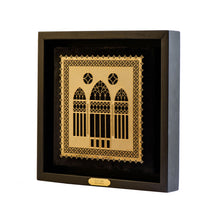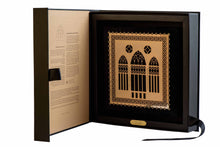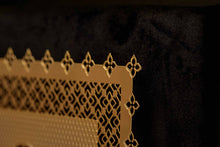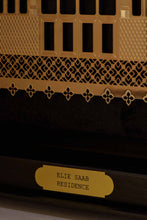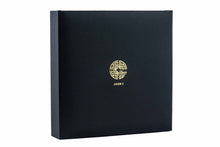
Introducing the exquisite Jihan C Wall Art Display, a fusion of elegance and storytelling. Each piece features a stunning gold-plated metal façade delicately set against a luxurious black velvet base, all framed within a sleek wooden black frame. The art display is not just a piece of décor but a tale waiting to be told, with its backside carrying the enchanting story of the gold-plated metal façade.
Measuring 30 cm x 30 cm, this art display is presented in a beautiful box, adding an extra touch of luxury to your space. The box also provides ample room for personalization, allowing you to include a dedication message that makes this piece truly yours or a cherished gift for a loved one.
Elevate your surroundings with the Jihan C Walla Art Display, where art meets luxury and storytelling in perfect harmony.
The Story Behind the Triple Arch Window (Elie Saab Home):
In Lebanon, the house with triple arches appeared in the second half of the 19th century. The house soon became a favorite of the bourgeois class, and represented a new form of urban architecture inspired by elements of Ottoman modernity.
The house was centered on a large central hall or room. It featured a triple arched window, a central element of its design, which opened onto a narrow balcony and a garden, or a street, or landscape.
The Lebanese “Gothic” triple arched window represented here comes from the home of world-renowned fashion designer Elie Saab in Beirut’s Gemayzeh district. With a deep appreciation of the traditional style, the designer undertook an extensive yet delicate restoration of the 20th century mansion and preserved its unique features for generations to come.
The colorful geometric patterned tiles used in residential buildings of the 1920s and 1930s, locally known as “Cemento,” were produced in local tile factories, by skilled workers, using cast iron molds and a water press. The “Cemento” tiles in Elie Saab’s residence are represented here as the peripheral framing of the artwork.





